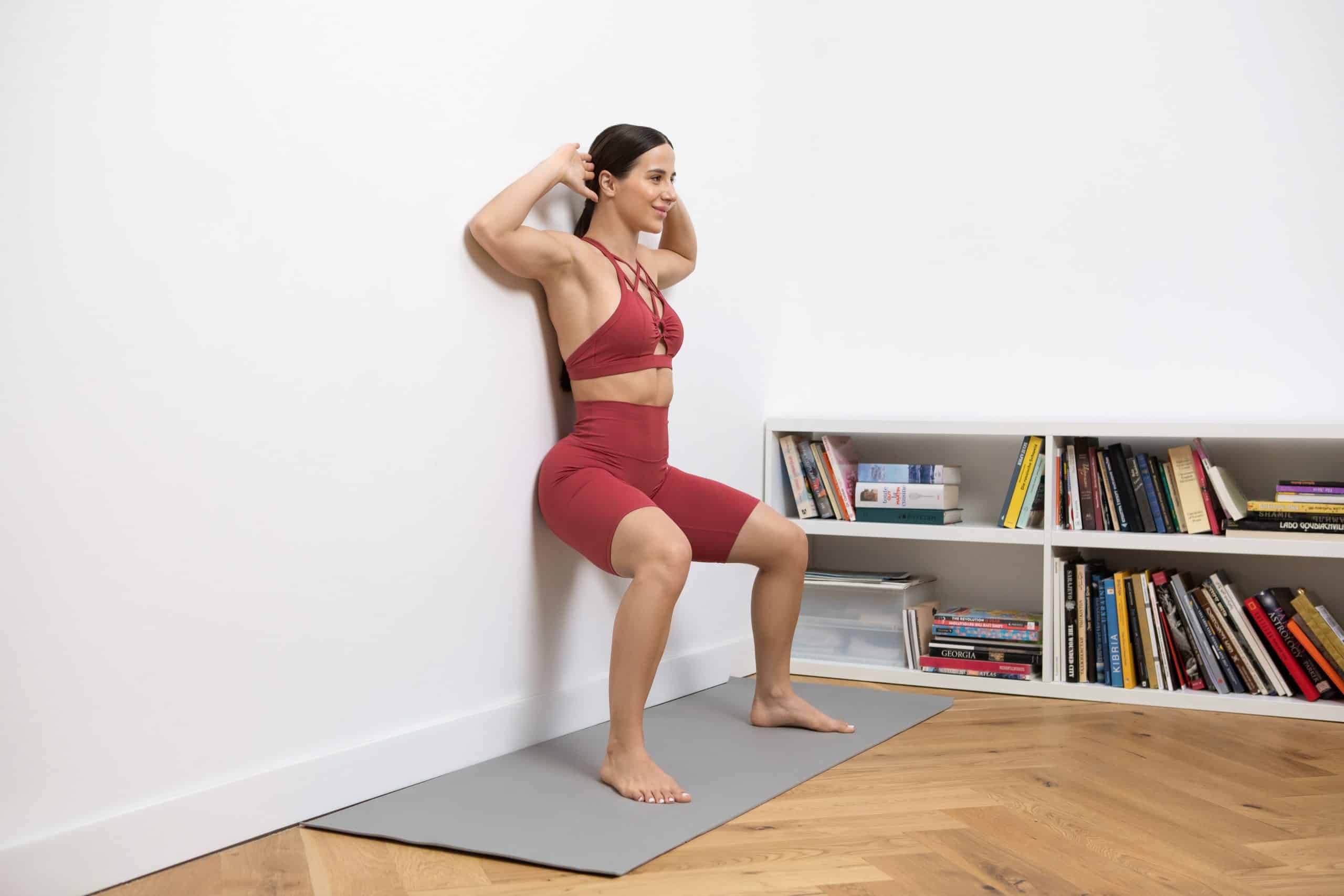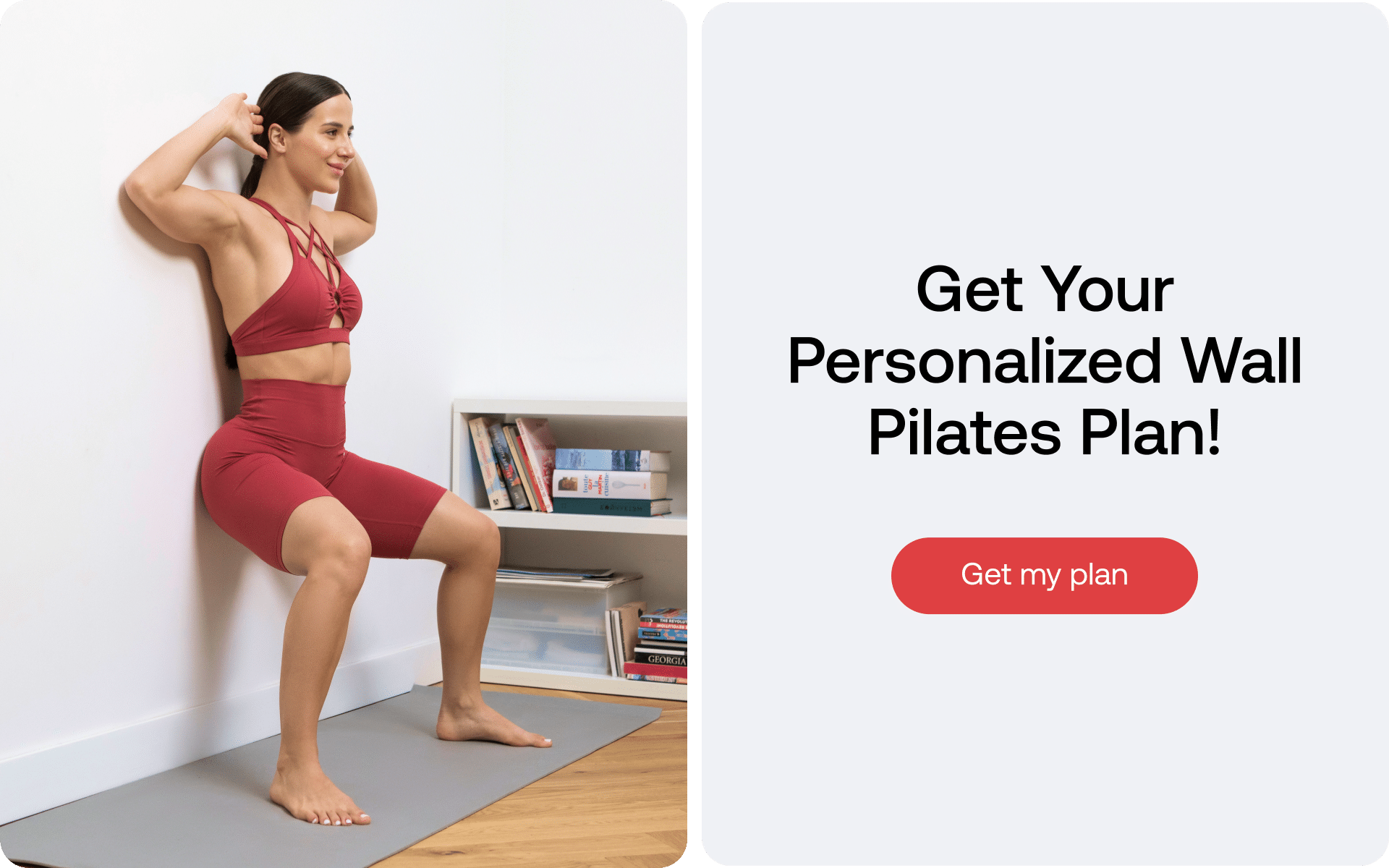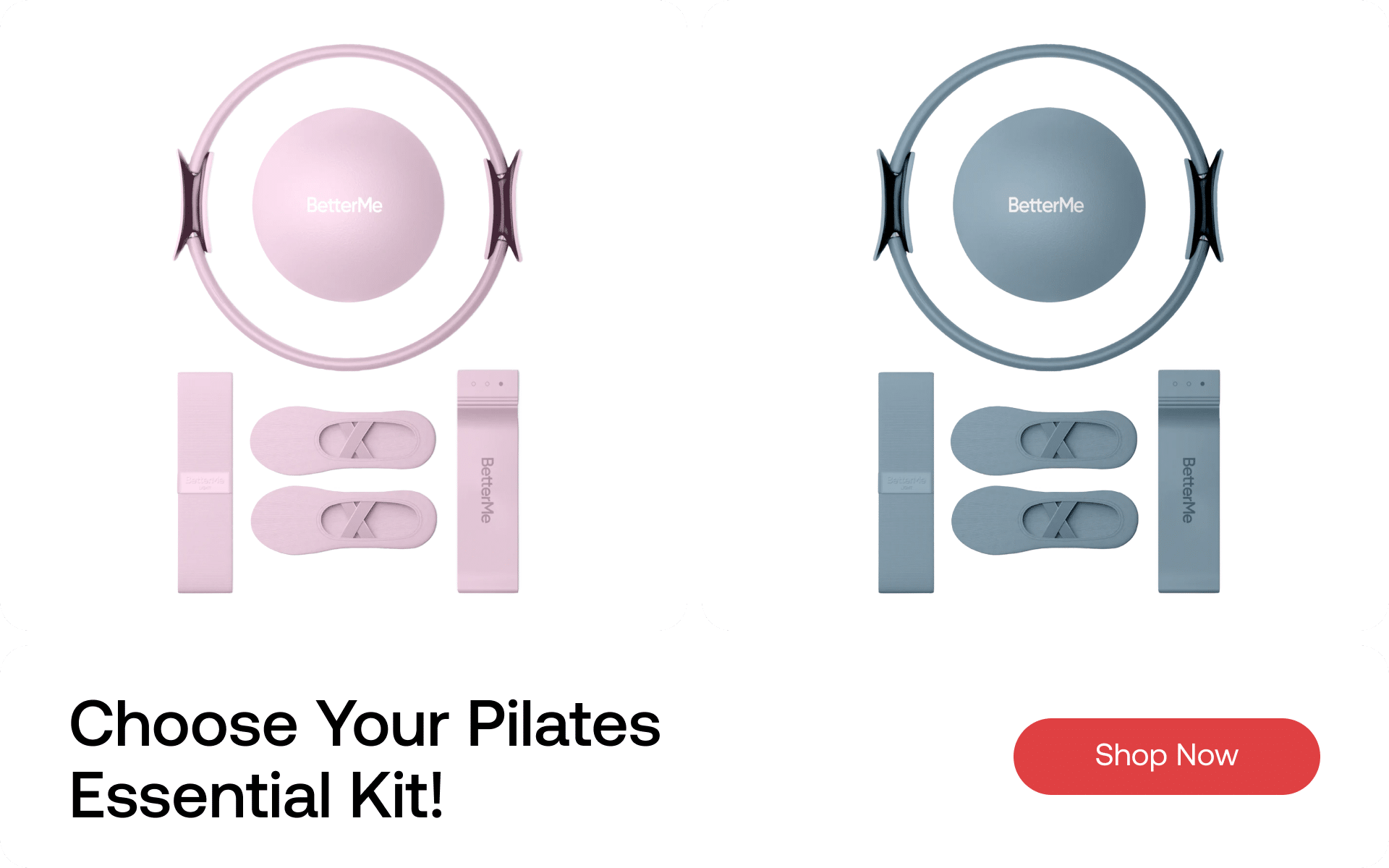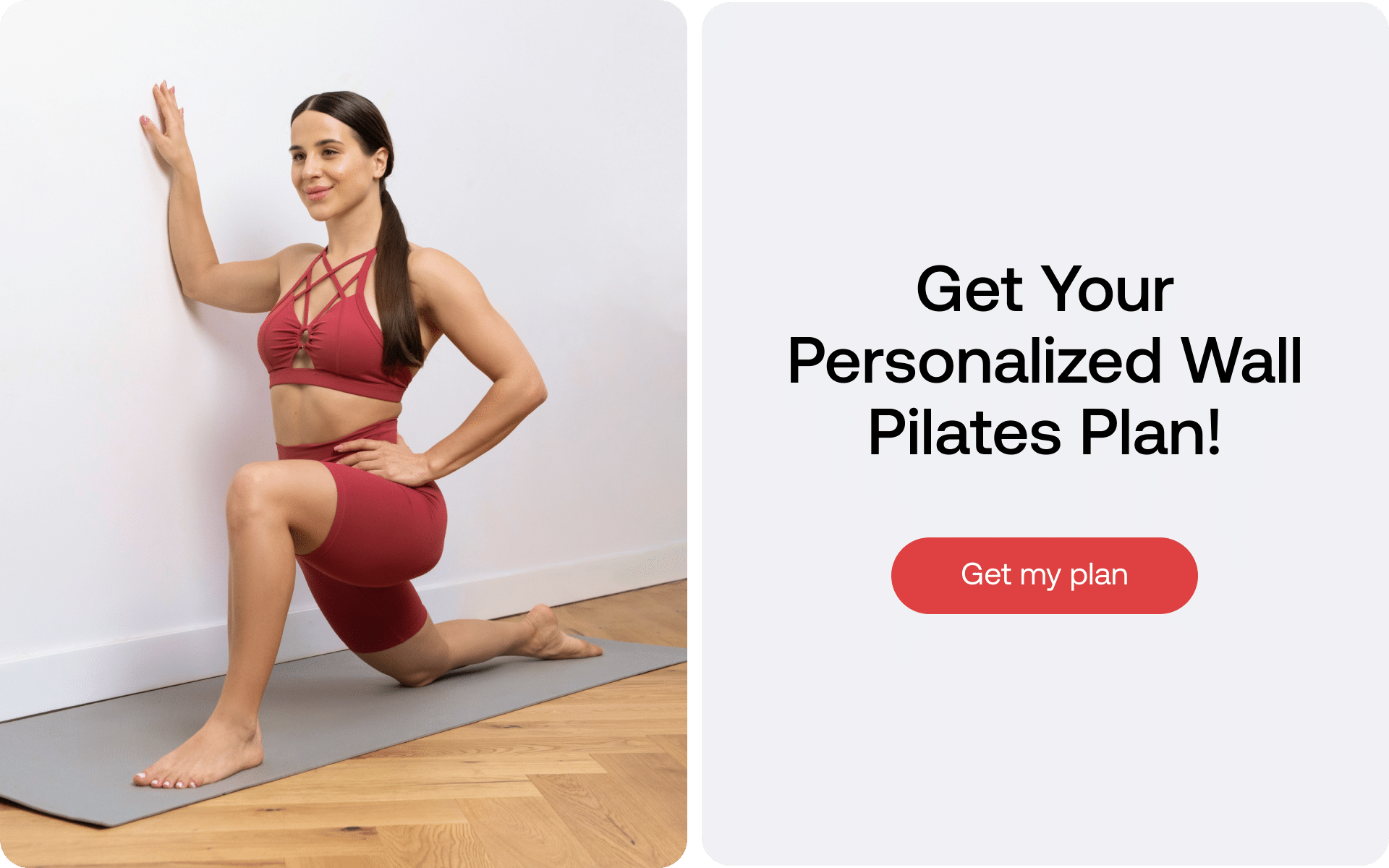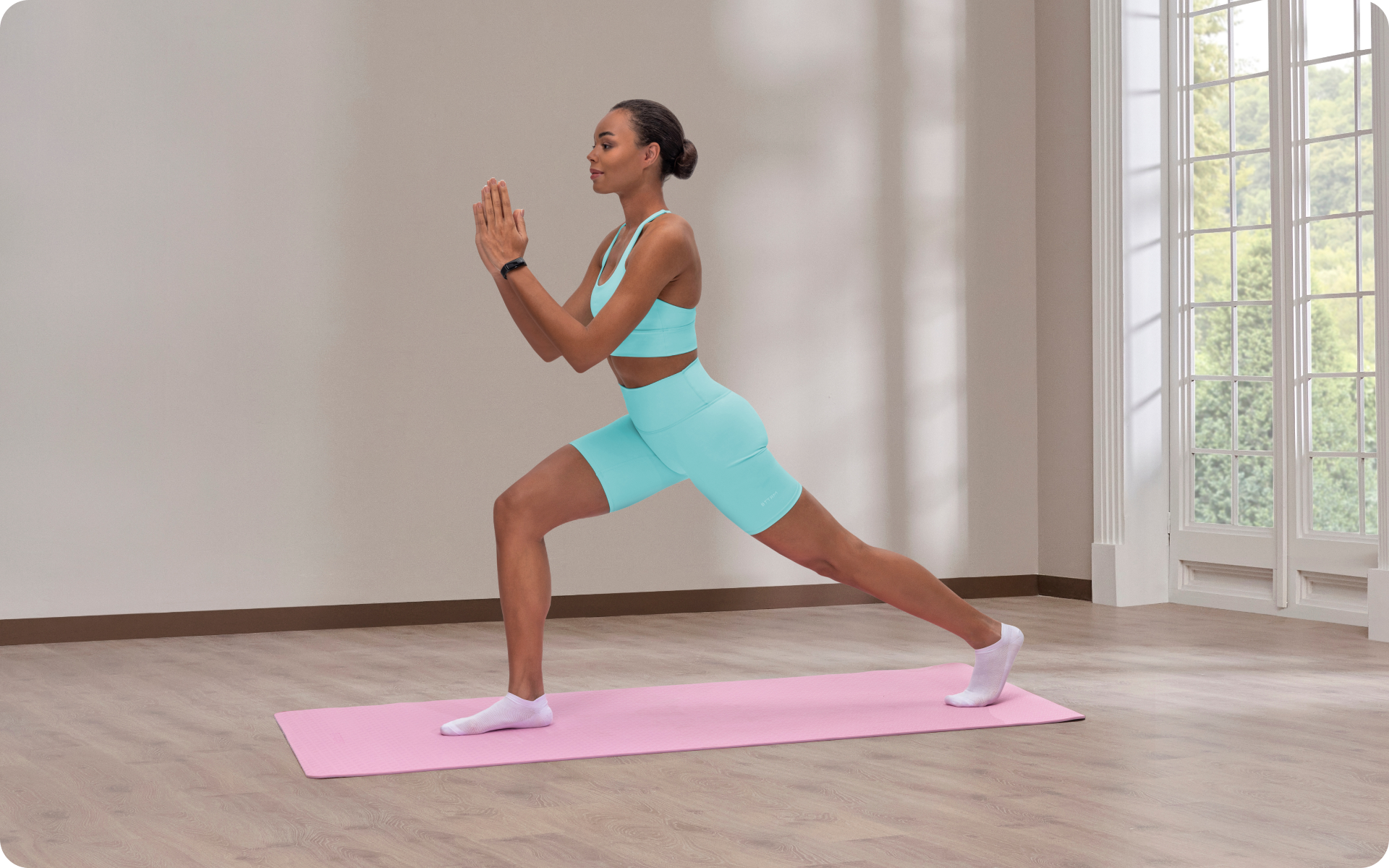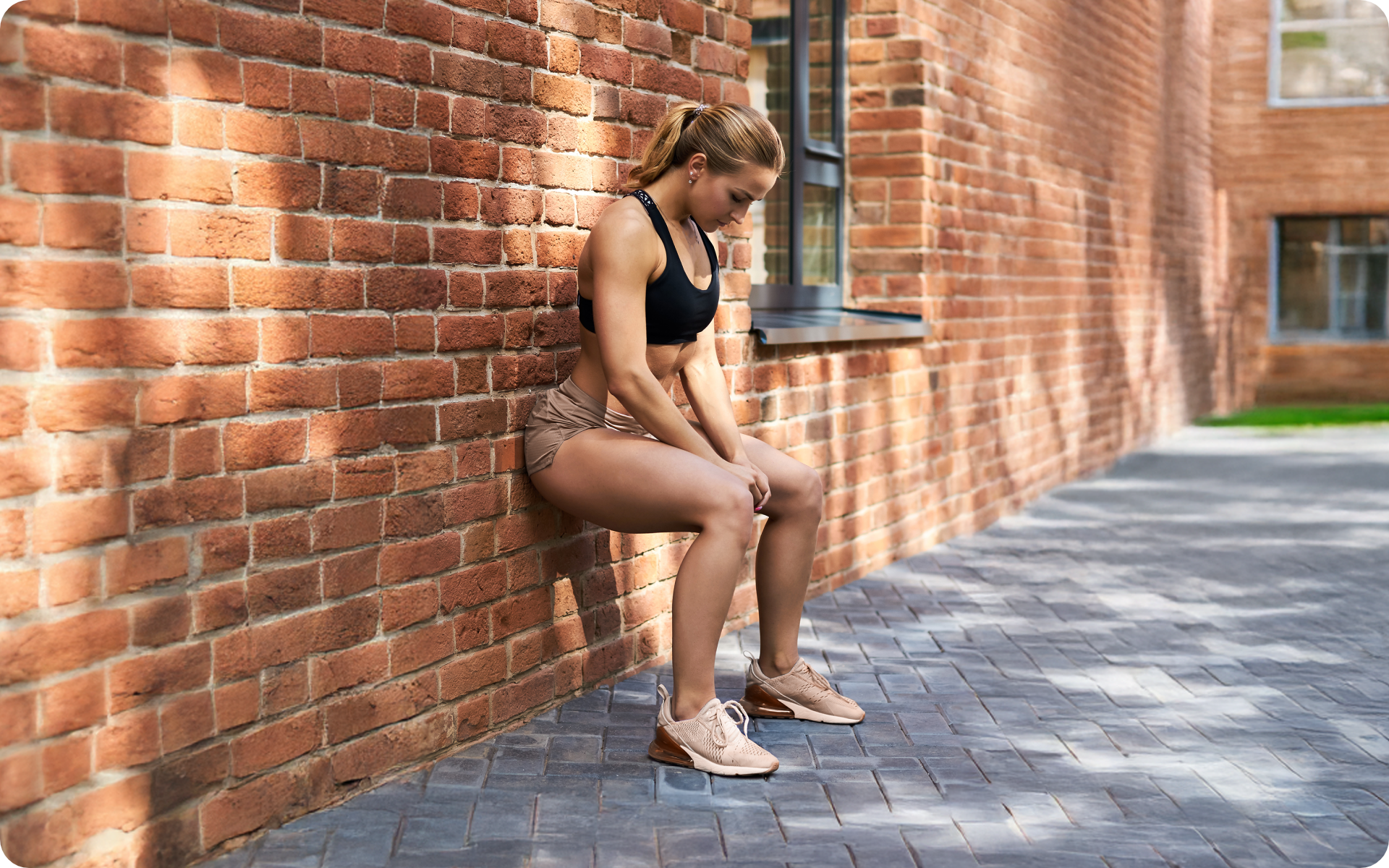Welcome to the world of fitness, where myths and misconceptions often cloud the judgment on what truly works. Today, we’re tackling a commonly debated topic: Do wall sits build muscle? This seemingly simple exercise has garnered a lot of attention for its potential muscle-building benefits, particularly for the lower body. And if you’re thinking of adding wall sits to your workout routine, it would be worthwhile to get the facts straight. In this article, we’ll dive deep into the science behind wall sits, explore their effectiveness in muscle development, and provide insights that should help you make informed decisions about incorporating this exercise into your workout routine.
How Are Wall Sits Performed?
Performing wall sits correctly is crucial for targeting the intended muscles and preventing injury. Here’s a step-by-step guide to doing wall sits with proper form:
- Find a flat, sturdy wall:
Choose a smooth, solid wall without any obstructions, such as wall hangings or furniture, that could interfere with your exercise.
- Stand against the wall:
Position yourself with your back flat against the wall. Stand with your feet shoulder-width apart and approximately 2 feet away from the wall. Your feet should be pointing straight ahead.
- Slide down the wall:
Slowly slide your back down the wall, bending your knees as you go. Keep your back flat against the wall throughout the movement to maintain proper posture and alignment.
- Reach the squat position:
Continue sliding down until your thighs are parallel to the floor and your knees form a 90-degree angle. Your knees should be directly above your ankles, and your hips should be in line with your knees.
If you cannot reach a 90-degree angle, lower yourself as far as you comfortably can while maintaining proper form.
- Position your arms:
Place your hands on your hips or extend them out in front of you, parallel to the floor. Ensure your shoulders are relaxed and avoid resting your hands on your thighs, as this can take some of the weight off your legs and reduce the effectiveness of the exercise.
- Hold the position:
Engage your core, glutes, and leg muscles to hold the squat position. Maintain an even distribution of weight through your heels and the balls of your feet. Keep your chest up and your gaze forward to ensure proper alignment.
- Breathe:
Focus on taking slow, deep breaths while holding the wall sit position. Inhale through your nose and exhale through your mouth.
- Return to the starting position:
After holding the wall sit for the desired duration, slowly straighten your legs and slide back up the wall to return to the standing position. Stand up fully and shake out your legs if needed.
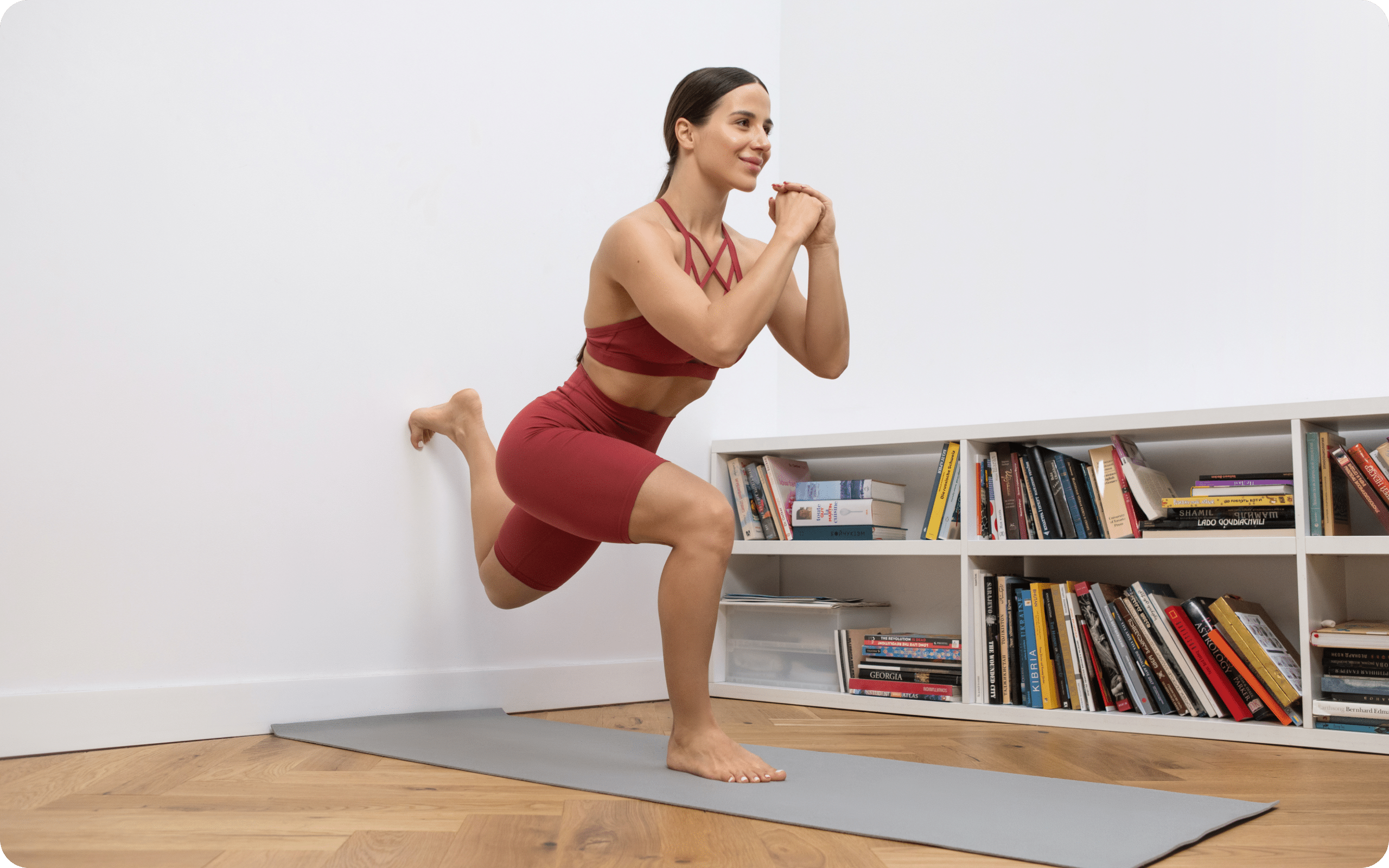
Wall Sits Muscle Activation Explained
Wall sits, also known as wall squats, are a static exercise that primarily targets the lower body muscles. By holding an isometric squat position against a wall, you engage multiple muscle groups simultaneously.
Let’s delve into the details of muscle activation during wall sits and understand which muscles are being worked:
- Quadriceps: These are the four large muscles located at the front of your thigh (2). Wall sits heavily engage the quadriceps, as they are responsible for stabilizing your knees and maintaining the squat position.
- Hamstrings: Located at the back of your thighs, hamstrings play a crucial role in supporting the knee joint during wall sits (1). They work together with the quadriceps to stabilize your lower body.
- Glutes: Your gluteal muscles, or glutes, are the muscles that make up your buttocks (6). Wall sits activate your glutes, particularly the gluteus maximus, which helps maintain hip stability and the proper alignment of your pelvis.
- Calves: The calf muscles, specifically the gastrocnemius and soleus, are engaged to a lesser extent during wall sits. They provide additional support to your legs by stabilizing the ankle joint.
- Core: Although not the primary focus of wall sits, your core muscles, including the rectus abdominis, obliques, and erector spinae, are activated to maintain an upright posture and keep your spine stable throughout the exercise (9).
Will Wall Sits Build Muscle?
While wall sits are effective in activating multiple muscle groups, particularly in the lower body, their impact on actual muscle building is a subject of debate.
To understand whether or not wall sits build muscle, let’s explore the factors that contribute to muscle growth and how wall sits fit into the equation.
Muscle growth factors:
Progressive Overload
For muscles to grow, they need to be subjected to increasing levels of stress over time (7). This can be achieved by progressively increasing the weight, repetitions, or intensity of an exercise.
Whether you’re looking to simply pep up your fitness routine, jazz up your diet with mouth-watering low-calorie recipes or want to get your act together and significantly drop that number on your scale – BetterMe app has got you covered! Improve your body and revamp your life with us!
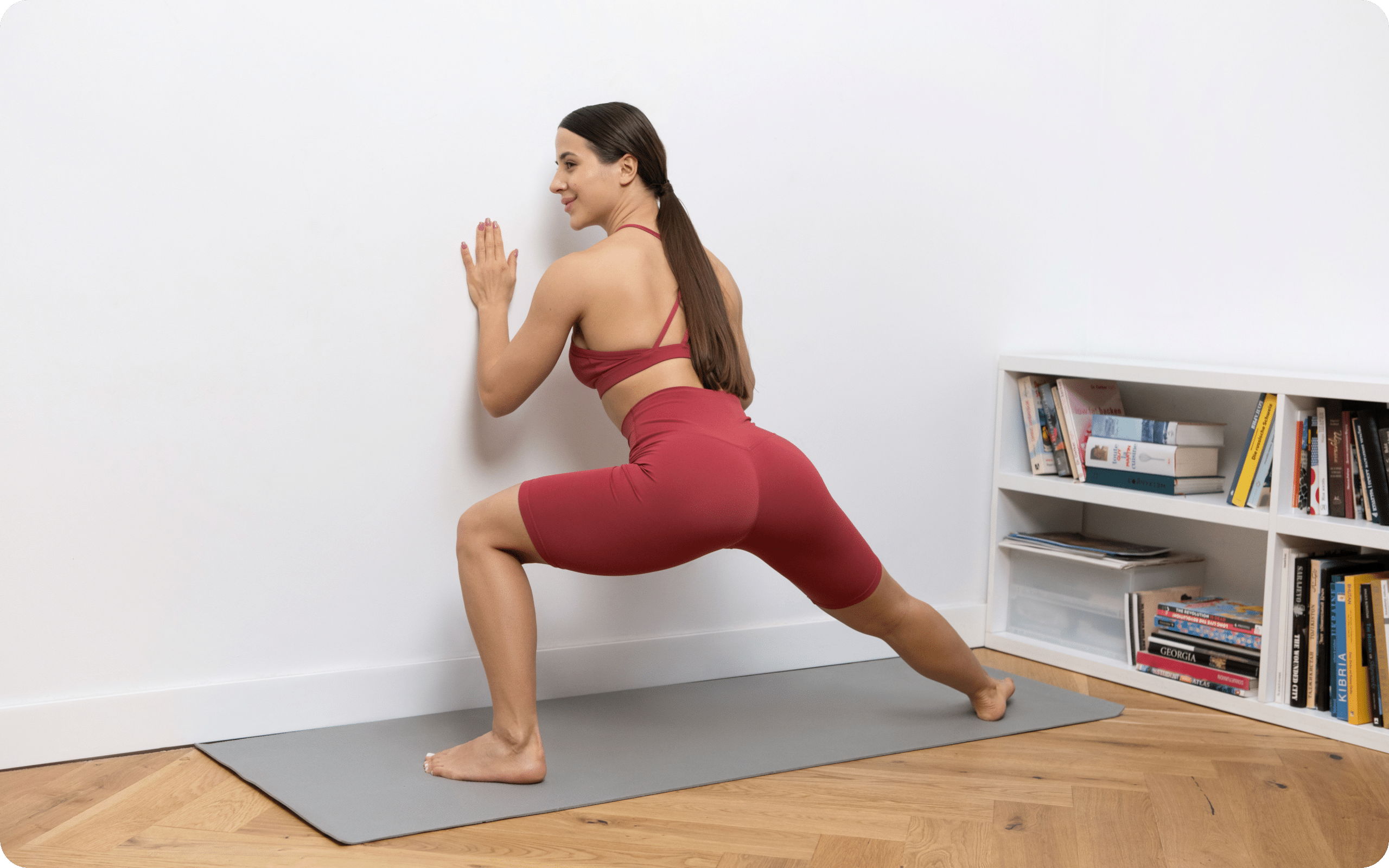
Time Under Tension
Muscle growth is influenced by the amount of time a muscle is under stress during a workout. Longer periods of tension can lead to increased muscle growth (5).
Muscle Damage And Repair
When muscles are subjected to intense workouts, microscopic damage occurs to the muscle fibers. The body then repairs and rebuilds these fibers, making them stronger and larger but requires ample recovery time to do so (8).
Wall Sits And Muscle Building
Wall sits are an isometric exercise, which means that the muscles are held in a static position without any movement.
While they can help improve muscular endurance and stability, they may not be the most effective exercise for promoting muscle growth, primarily due to the following reasons:
1. Limited Progressive Overload
Wall sits rely on body weight as resistance, making it challenging to progressively increase the load on your muscles. Although you can increase the duration of the hold, this primarily improves muscle endurance rather than promoting significant muscle growth.
2. Lack Of Dynamic Movement
Since wall sits are a static exercise, they do not involve the full range of motion typical of dynamic exercises like squats or lunges.
Dynamic movements tend to be more effective in promoting muscle growth and optimal strength development, as they engage the muscles through various phases of lengthening and contraction (10).
Read More: A Beginner’s Guide To Wall Pushups: Learn The Basics Of This Effective Exercise
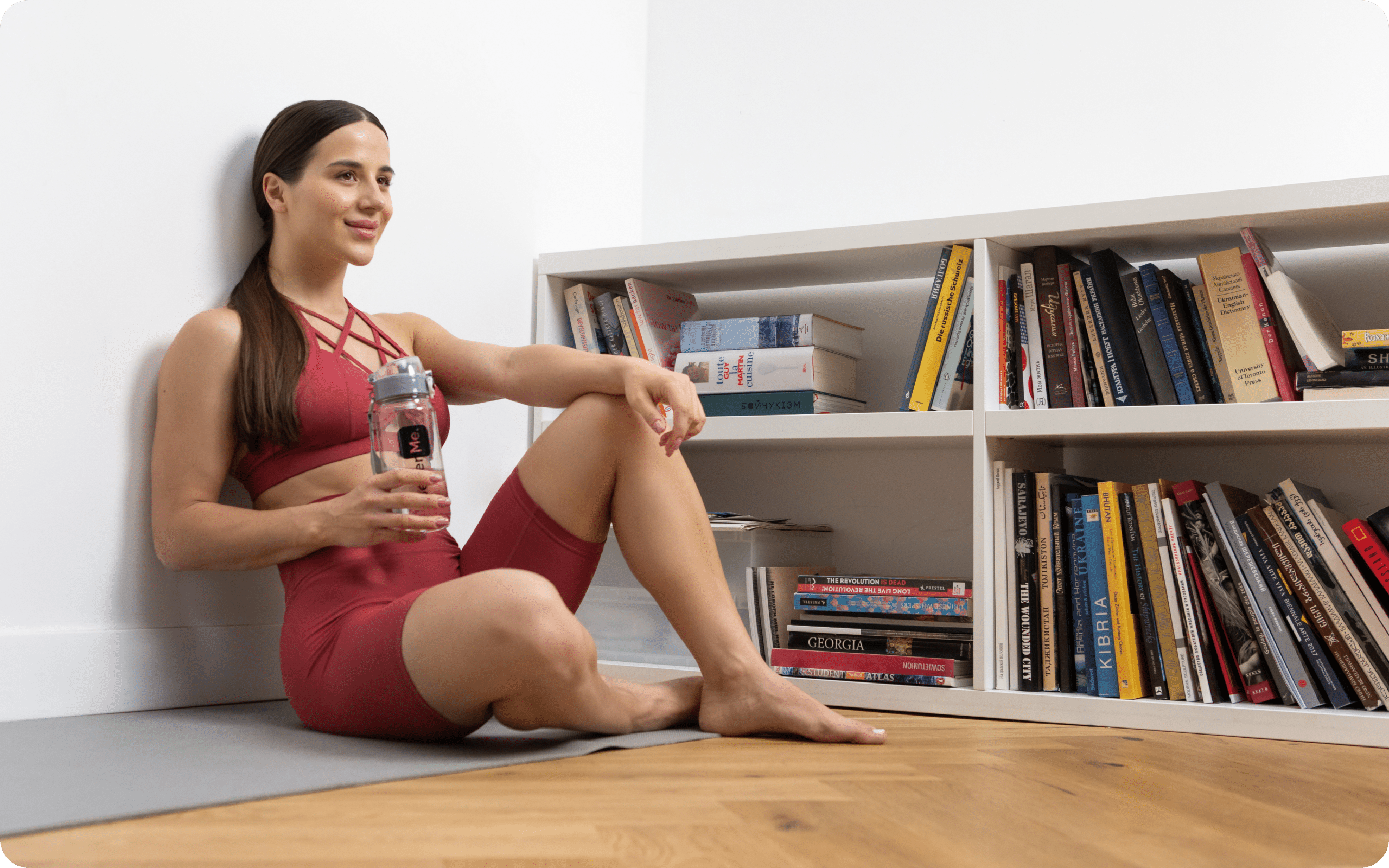
Do Weighted Wall Sits Build Muscle?
Weighted wall sits can potentially enhance muscle-building effects, compared to regular wall sits. By adding weights, you introduce external resistance, which can help address some of the limitations of standard wall sits in terms of muscle growth.
Here’s how weighted wall sits can contribute to building muscle:
Increased Progressive Overload
Adding weights, such as a dumbbell, kettlebell, or weight plate, increases the load on your muscles, providing an opportunity for progressive overload. As you continue to add more weight over time, your muscles will be subjected to greater stress, which promotes muscle growth (7).
Increased Time Under Tension
By holding the weighted wall sit position for extended periods, you expose your muscles to increased tension, which can contribute to muscle growth (4).
However, it’s essential to find a balance between the duration of the hold and the amount of weight used to maximize muscle-building potential.
Greater Muscle Activation
The additional resistance from weights can lead to higher muscle activation in the lower body, particularly the quadriceps, hamstrings, and glutes. This increased activation may support muscle growth, when combined with other dynamic exercises targeting the same muscle groups.
While weighted wall sits can offer some advantages in terms of muscle building, it’s important to remember that they are still an isometric exercise.
To achieve well-rounded muscle development and functional strength, it’s crucial to incorporate a variety of dynamic exercises, such as squats, lunges, deadlifts, and leg presses, alongside weighted wall sits in your workout routine.
These compound movements engage multiple muscle groups through a full range of motion, providing a more comprehensive approach to muscle building as well as increasing lower body physical capacities.

What Else Can Wall Sits Do?
Even though wall sits may not be the most effective exercise for building muscle mass, they still offer several benefits that can contribute to your overall fitness and health. Here are some key advantages of incorporating wall sits into your workout routine:
Improve Muscular Endurance
Wall sits require you to hold a static squat position for an extended period, which helps improve the endurance of your lower body muscles, particularly the quadriceps, hamstrings, and glutes.
Enhance Core Strength
While performing wall sits, your core muscles, including the rectus abdominis, obliques, and erector spinae, are engaged to maintain an upright posture and stabilize your spine. This engagement helps strengthen your core, which is an essential component for overall stability and balance (3).
Increase Joint Stability
Wall sits help develop stability in your knee and hip joints by engaging the surrounding muscles, such as the quadriceps, hamstrings, and glutes as well as smaller, stabilizer muscles. This increased stability can aid in injury prevention, especially during dynamic movements like running, jumping, or playing sports.
Low-Impact Exercise
Since wall sits are an isometric and stationary exercise, they place minimal stress on your joints, making them an ideal option for individuals recovering from injuries, those with joint issues, or beginners who are easing into a fitness routine.
Convenience
Wall sits can be performed anywhere there’s a flat, sturdy wall, making them a convenient addition to your at-home or on-the-go workouts. No specialized equipment is required, and you can easily modify the intensity by adjusting the duration of the hold.
If you struggle to even flirt with the idea of giving up your favorite foods or working out till your legs give way – BetterMe app is here to breathe a fresh perspective into the way you view the weight loss process! Check out the app and experience the fun side of fitness and dieting with BetterMe!
How Many Wall Sits Should I Do?
The number of wall sits you should do depends on your fitness level, goals, and the purpose of including them in your workout routine. Wall sits are typically performed over time, meaning you hold the position for a certain duration rather than counting repetitions. As a general guideline, consider the following:
- Beginners: If you’re new to wall sits or starting your fitness journey, aim to hold the position for 20-30 seconds per set. Perform 2-3 sets with a 30-60 second rest between sets.
- Intermediate: As your strength and endurance improve, try holding the wall sit for 45-60 seconds per set. Perform 3-4 sets with a 30-60 second rest between each set.
- Advanced: For advanced individuals, aim to hold the position for 90 seconds or longer per set. Perform 4-5 sets with a 30-60 second rest between each set. You can also consider adding weights to increase the challenge.
Keep in mind that wall sits primarily target muscular endurance and stability. To see improvements in these areas, incorporate wall sits into your workout routine 2-3 times per week.
Which Exercises To Do Instead Of Wall Sits?
If you’re looking for alternative exercises to wall sits that target similar muscle groups but involve dynamic movements, consider the following options. These exercises can help promote muscle growth, functional strength, and overall fitness more effectively than wall sits:
Squats
Squats are a compound exercise that targets the quadriceps, hamstrings, glutes, and core muscles. They involve a full range of motion and can be easily modified for different fitness levels by adjusting the weight or depth of the squat.
Lunges
Lunges work the quadriceps, hamstrings, glutes, and core muscles while also improving balance and stability. They can be performed in various ways, such as forward, reverse, or lateral lunges, to target different muscles and add variety to your workout routine.
Step-Ups
Step-ups engage the quadriceps, hamstrings, and glutes while also challenging your balance and coordination. You can perform step-ups using a bench, a sturdy box, or stairs, and you can increase the intensity by adding weights or increasing the height of the step.
Leg Press
The leg press is a machine-based exercise that targets the quadriceps, hamstrings, and glutes. It allows you to safely lift heavy loads, making it an effective option for building muscle mass and strength in the lower body. This can also be performed as a safe, single-leg exercise, which is an effective method to improve total lower body strength while mitigating any potential weakness between sides.
Deadlifts
Deadlifts are a compound exercise that works the entire posterior chain, including the hamstrings, glutes, lower back, and core muscles. They are highly effective for building strength and muscle mass and can be performed with a barbell, dumbbells, or kettlebells.
The Bottom Line
While wall sits can contribute to improved muscular endurance and stability, they may not be the most effective exercise for building muscle mass.
To achieve significant muscle growth, it’s essential to incorporate a variety of dynamic exercises that target the same muscle groups and follow the principles of progressive overload, time under tension, and muscle damage and repair.
DISCLAIMER:
This article is intended for general informational purposes only and does not serve to address individual circumstances. It is not a substitute for professional advice or help and should not be relied on for making any kind of decision-making. Any action taken as a direct or indirect result of the information in this article is entirely at your own risk and is your sole responsibility.
BetterMe, its content staff, and its medical advisors accept no responsibility for inaccuracies, errors, misstatements, inconsistencies, or omissions and specifically disclaim any liability, loss or risk, personal, professional or otherwise, which may be incurred as a consequence, directly or indirectly, of the use and/or application of any content.
You should always seek the advice of your physician or other qualified health provider with any questions you may have regarding a medical condition or your specific situation. Never disregard professional medical advice or delay seeking it because of BetterMe content. If you suspect or think you may have a medical emergency, call your doctor.
SOURCES:
- Anatomy, Bony Pelvis and Lower Limb, Hamstring Muscle (2022, ncbi.nlm.nih.gov)
- Anatomy, Bony Pelvis and Lower Limb: Thigh Quadriceps Muscle (2022, ncbi.nlm.nih.gov)
- Effects of core strength training on core stability (2018, ncbi.nlm.nih.gov)
- Maximizing Muscle Hypertrophy: A Systematic Review of Advanced Resistance Training Techniques and Methods (2019, ncbi.nlm.nih.gov)
- Muscle time under tension during resistance exercise stimulates differential muscle protein sub‐fractional synthetic responses in men (2011, onlinelibrary.wiley.com)
- Muscles of the Gluteal Region – Superficial – Deep (2022, teachmeanatomy.info)
- Progressive overload without progressing load? The effects of load or repetition progression on muscular adaptations (2022, ncbi.nlm.nih.gov)
- The Effect of Muscle Loading on Skeletal Muscle Regenerative Potential: An Update of Current Research Findings Relating to Aging and Neuromuscular Pathology (2009, ncbi.nlm.nih.gov)
- The Effects of Modified Wall Squat Exercises on Average Adults’ Deep Abdominal Muscle Thickness and Lumbar Stability (2013, ncbi.nlm.nih.gov)
- The Influence of Movement Tempo During Resistance Training on Muscular Strength and Hypertrophy Responses: A Review (2021, link.springer.com)

